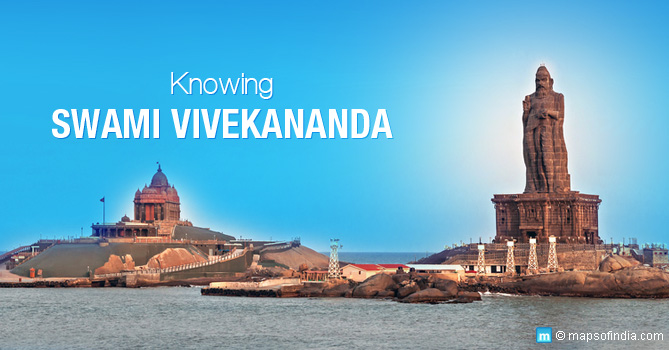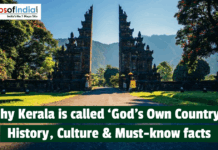
On 12 January this year, Indians celebrated the 153rd birth anniversary of Swami Vivekananda. The seer, saint and patriot was known for his inclusive approach to spirituality and for making India proud at the Chicago Parliament of World Religions in 1893. This week in our travel series we shall take you to three important places associated with the life and times of Swami Vivekananda in India. The one common theme that sets these places apart from other places of worship in the country is the emphasis on spirituality and the warmth with which people from different religions are welcomed.
Belur Math, Belur, West Bengal
“The blazing light of universal harmony that will emanate from here will flood the whole world.” – Swami Vivekananda (about Belur Math)
The Belur Math is one of the most significant places associated with the life and teachings of Swami Vivekananda. The Belur Math is located in Belur, on the western banks of the River Hoogly, about an hour’s drive from Kolkata, the capital of West Bengal. The Math is a monastery and forms the headquarters of the Ramakrishna Math and the Ramakrishna Mission – both founded by Swami Vivekananda. True to his teachings, the Math is not a religious, but a spiritual centre and welcomes people from all religious backgrounds. The Belur Math is a place every spiritual aspirant in India must visit. The serenity of the environment and the calm settings, apart from the natural beauty of the Math, make it the perfect place to contemplate the “potential Divinity of the Soul” as Swamiji put it.
The central temple at the Belur Math is not a place of worship but is a meditation centre and is famous for its architecture which is a seamless blend of Hindu, Islamic, and Christian styles and motifs. The temple was designed by Swami Vivekananda himself and consecrated in 1938. Apart from this, there are temples dedicated to Mother Sharda, wife of Sri Ramakrishna (Guru of Swami Vivekananda). There is a huge library for the use of the monks of the Math and also a training centre for trainee monks of the order. It is in this Math that Vivekananda spent his final years – the room dedicated to his memory enshrines all his relics.
Timings:
April to September: 6 a.m. to 11.30 a.m. and 4 p.m. to 7 p.m.
October to March: 6.30 a.m. to 11.30 a.m. and 3.30 p.m. to 6 p.m.
Sri Ramakrishna Temple Timings: 6 a.m. to 11 a.m. and 3.30 p.m. to 8 p.m.
Swami Vivekananda’s Ancestral House and Cultural Centre in Kolkata
The Ramakrishna Mission Swami Vivekananda’s Ancestral House and Cultural Centre, popularly referred to as Vivekananda Museum is located in a very old and culturally rich part of Kolkata. Swami Vivekananda (known as Narendranath Datta prior to initiation into monkhood) was born in this ancestral house on 12 January 1863. He grew up here and spent his early years here. The ancestral home of the Dattas was built in the early 1700s but over time had fallen apart. There had been some history of family litigation as well. It was only as late as the 1990s that the government of West Bengal succeeded in securing the place for the Ramakrishna Mission. The place was restored and built into a huge cultural and educational centre apart from being turned into a museum. In 2004, former President of India Dr APJ Abdul Kalam inaugurated this centre.
Swami Vivekananda’s Ancestral House and Cultural Centre is a fascinating place to visit. There is a memorial hall and meditation centre here which welcomes people from all religions, caste, and race. The library here has a huge collection of books. A number of computer skill courses and language trainings are undertaken here benefiting thousands of young men and women. The complex also houses a free dispensary that provides free medical treatment and medicines for the poor. The centre also undertakes a number of social welfare activities from time to time. It is one of Kolkata’s most significant cultural centres.
Visitor Information
Address: 105 Vivekananda Road, Kolkata, West Bengal – 700006
Office Timings: 10 a.m. to 12.30 p.m. and 4 p.m. to 6 p.m. (Monday to Saturday)
Museum Timings: 10 a.m. to 12.30 p.m. and 2 p.m. to 5 p.m. (Monday to Saturday)
School of Languages Timings: 8 a.m. to 8 p.m. (Monday to Sunday)
Text Book Library Timings: 10 a.m. to 6 p.m. (Monday to Saturday)
Vivekananda Rock Memorial, Kanyakumari
The Vivekananda Rock Memorial, built in 1970, is located on a large rocky structure off the coast of Vavathrurai in Kanyakumari. After having completed his tour of the world and having spread his spiritual message across India, Swami Vivekananda arrived at the southernmost tip of mainland India, Kanyakumari in 1892. Here he looked out into the vast expanse of the ocean. He jumped in and swum through the rough sea to reach the rock, some 500 metres into the sea. Here he sat and meditated for three days and night before gaining enlightenment. Almost a century later, due to the dedicated efforts of Shri Eknath Ranade and with contributions from people across the nation, the rock memorial was erected. Apart from the memorial, there is a meditation hall, and a Vivekananda Kendra on the rock. The Vivekananda Rock Memorial of Kanyakumari is a beautiful blend of both Tamil and Bengali styles of architecture. The Vivekananda Kendra is an organization where non-monastically oriented young men and women join and help serve the nation by undertaking welfare activities. Thousands of tourists visit the memorial each year and pay homage to the saint-seer and his vision of a united, developed, and tolerant India.
Swami Vivekananda’s ideal for India may best be described in his own words “India must conquer the world, and nothing less than that is my ideal. It may be very big, it may astonish many of you, but it is so”. By conquer, Swami Vivekananda meant that India should rightfully claim its place as the melting point of various cultures, religions, and of progressive education. A complete understanding of his ideals and visions can only be gained by visiting these places associated with his life.





